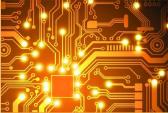As everyone knows, PCB is one of the important components of the electronics industry, ranging from daily mobile phones to automobiles, communication equipment, military weapon systems, and PCB boards are all essential core components. The PCB board plays a role in the support of components and chips, inter-layer interconnection and conduction, prevention of welding bridges and maintenance identification in the whole machine. Its design and manufacturing quality directly affect the quality and cost of the entire product, and even lead to Success or failure of business competition. The stability of all functions and performance of the printed circuit board and the reliability of the chemicals in the PCB circuit board production process are closely related.
PCB chemicals are becoming more important
1 The performance and stability of printed boards are closely related to the chemicals used in the production of printed boards
The printed board plays the role of supporting components and chips in the whole machine, inter-layer interconnection and conduction, preventing solder bridging and maintenance identification, etc., while all the functions and performance of the printed board are the same as the stability and reliability. The chemicals in the printed board production process are closely related. It can be said that without many chemicals for different purposes, it is impossible to make printed boards, and it is impossible to produce high-end multi-layer boards, HDI boards, chip carrier boards, rigid-flex printed boards suitable for various high-tech electronics. plate.

2 High-tech electronic products put forward more and more stringent requirements for printed board products
With the advancement of science and technology, printed boards are widely used in all kinds of high-tech electronic products, which promotes their impact on the reliability, stability, heat resistance, bendability, ductility of conductors, flatness, solderability, and thermal conductivity of printed boards. Performances such as expansion and contraction, surface cleanliness, etc. have put forward more and more stringent requirements. For example, the copper layer in the hole must not be cracked and the hole wall must not be separated under a thermal shock of 288°C for 10 seconds. In the past, it was only required once. Cycle, and now many electronic products require 3 cycles and so on. Small holes, dense lines, and thin plates are the development trends of printed boards today. Changes in various requirements of printed boards and improvements in various performances are often achieved through changes in chemical formulas and processes.
3 Chemicals for printed board production have long been occupied by foreign brands
Mainland China is a large PCB manufacturing country in the world. Its output and output value have become the world's largest in recent years, but the supporting industrial chain has not been formed. The brand and image of high-end equipment and equipment companies that produce PCB chemicals and PCBs have not yet been formed. Established, the market share is still very low, incompatible with the status of PCB power. Almost all large-scale PCB manufacturers in mainland China use chemicals from foreign brands.
Compared with the strong market demand, the domestic high-end PCB chemical market has long been occupied by foreign brands in Japan, Europe, America, and Taiwan. In the field of dry film photoresists for PCBs, Taiwan Changxing Chemical, Japan's Asahi Kasei, and Japan's Hitachi Chemical account for more than 80% of the global market. And it also shows that there is huge room for domestic import substitution.
PCB chemicals thrive
Downstream demand recovers and PCB chemicals thrive. In 2014, the global PCB output value was 56.2 billion U.S. dollars, an increase of 3%. Prismark predicts that the global PCB compound annual growth rate from 2015 to 2017 will be 3.9%. By 2017, the global PCB output value will reach 63 billion U.S. dollars. The downstream development drives the global demand for PCB chemicals to rise. According to IHS statistics, the global PCB chemicals market was approximately US$9.25 billion in 2012, and the PCB chemical market is expected to reach US$11.2 billion in 2017, with a compound annual growth rate of 4%.
Due to the potential of the domestic demand market and manufacturing advantages, China has attracted foreign investment. The mainland PCB industry has developed rapidly. In 2014, China's PCB market reached 28.6 billion U.S. dollars, accounting for 51% of the world. It is predicted that the compound growth rate of 2015-2017 will reach 6%. . The transfer of PCB to China will surely drive the demand for PCB chemicals to transfer to China. According to statistics, the domestic PCB chemicals market was 16.2 billion yuan in 2014 and is expected to reach 20.6 billion yuan in 2017.